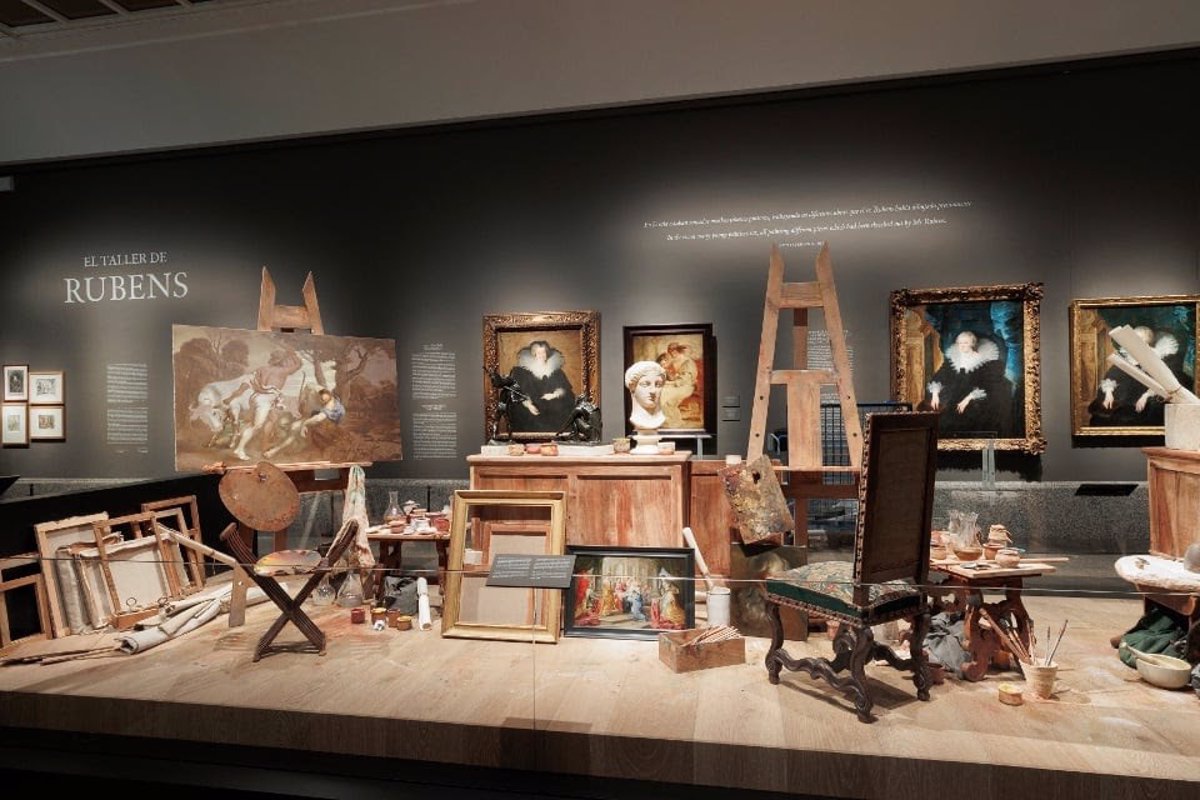He Prado Museum has been installed next to the Central Gallery ‘Rubens’ workshop’ an exhibition that delves into the creative process and that allows you to learn how European painters worked and discern between the works of the German master and those carried out by his assistants or collaborators.
“It is an exhibition that empowers the visitor because they are given all the instruments and elements that allow them to confront with a better background the works on display, by one of the great masters of the Western pictorial tradition.“, said this Monday the director of the Prado Museum, Miguel Falomir, at a press conference, where he explained that this is the objective of the exhibition, which will remain in room 16B of the Villanueva building until February 16.
The art gallery has brought together more than 30 works by Rubens and his assistants, and together with them a staging of the painter’s workshop has been installed, which includes all the tools necessary for his work, as well as some elements that evoke the person of Rubens, such as a cape and hat inspired by portraits of him, all impregnated with the smell of turpentine, one of the most present in the old workshops.
Falomir has pointed out that the exhibition focuses on two issues that are of “enormous” concern to curator Alejandro Vergara, head of Conservation of the Area of Flemish Painting and Northern Schools, such as authorship and reality. “What the exhibition does is delve into the entire creative processtelling us who are the actors in this entire process, the physical space in which the artistic work took place, the social and economic conditions in which they took place, and, of course, focusing a lot on what is the result of this entire process. “, he detailed.
For his part, the curator explained that ‘Rubens’ workshop’ through brushes, palettes, fabrics, boards, easels, tientos allows us to offer an idea of how he worked. “There is a lot of difference between great art and everything else. They are both made in the same workshop, but one of those two products is what makes us dedicate ourselves to it,” has stated.
Likewise, Alejandro Vergara has shared the two keys that exist to differentiate Rubens’ real works from the works made by his assistants in the master’s workshop. “Firstly, the works of the assistants do not reach the standards that we understand are those that define the author’s work.. And on the other hand, because, even though they are very good paintings, are something different and do not have the same essential characteristics”, has commented.
Some of the paintings that hang on the walls of the Prado and that allow us to see these differences are ‘Saturn devouring a son’, very close to this work is the painting ‘Democritus, the laughing philosopher’, of an assistant or ‘Mercury and Argus’.
To reinforce the expository discourse and delve deeper into Rubens’ way of working and the use he made of the work of his workshop collaborators, The exhibition room also includes a video that shows the recreation of the creation process of the work Mercury and Argos. with historical materials and techniques by the painter Jacobo Alcalde Gibert. The video explains how Rubens painted and how he used his workshop assistants.
